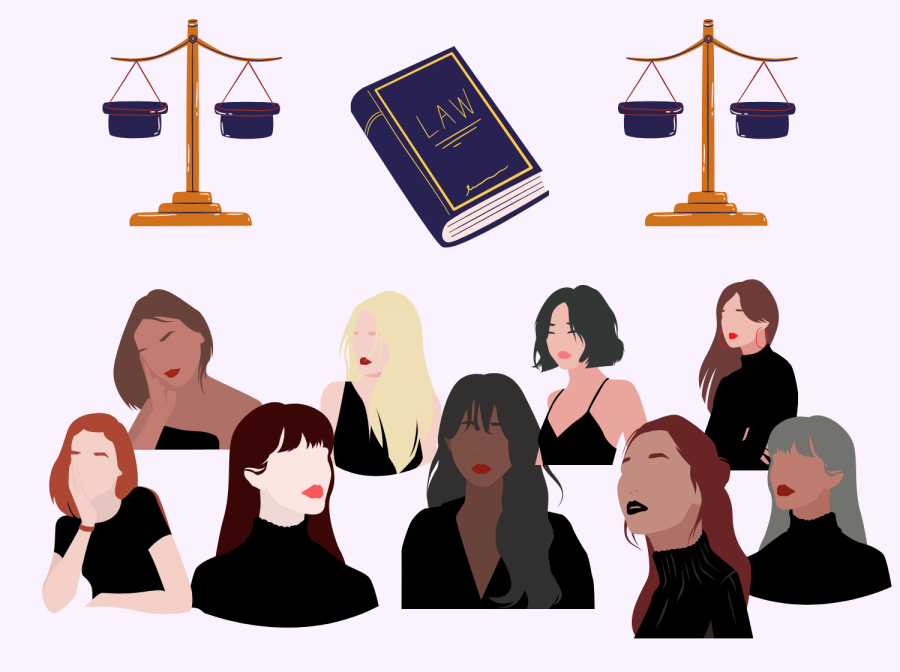‘When there are nine’: remembering Ruth Bader Ginsburg
Nine future women make their way to the Supreme Court as people like Ruther Bader Ginsburg leverage the law to enforce gender equality.
Famed Supreme Court Justice Ruth Bader Ginsburg (affectionately called ‘Notorious RBG’) passed away at 87 years old last month. Americans at large met Ginsburg’s death with speculations of her replacement, including which presidential candidate would appoint the next justice. Like clockwork, her successor’s confirmation commenced this week, though many RBG admirers still mourn the feminist icon.
Ginsburg led a life of activism for women’s rights, leveraging the law to provide equal educational and employment opportunities for women in America. She is quoted by RBG documentary writers Julie Cohen and Betsy West to have “captured for the Court what it is like to be a second-class citizen.”
In one interview, Ginsburg relayed how she’s often asked how many women on the Supreme Court will be enough. At least half, I think to myself. “When there are nine,” she responded. I’m reminded of how, historically, women have been taught to settle for “what they can get” from society. RBG fervently rejected that notion.
Through her story, we learn lessons of love, resilience, hard work and intention. Lessons that the next generation should glean as all of us, rather than one individual, fill Ruth Bader Ginsburg’s seat.
During the late 1940’s, the Red Scare accused many government officials of communist leanings. Lawyers defended such people on the basis of free speech, which inspired Ginsburg to practice law as a method of enforcing equality. Studying at Cornell in 1950, she met Marty.
The marriage between Ruth and Marty Ginsburg was unusually progressive for its time. As RBG argued cases before the Supreme Court in the 70’s, Marty took up house chores such as cooking and cleaning, then relocated with her when she was hired as a D.C. Circuit judge. During the Clinton Administration, Marty campaigned for Ruth to become the next Supreme Court Justice.
For all that Marty did, Ruth certainly returned the favor. She cared for her husband when he had cancer, sometimes taking on both of their workloads at Harvard Law School. On top of that, RBG raised their toddler.
Ginsburg entered Harvard as one of nine women in her class of over 500. On numerous occasions, faculty denied her equal access to resources, despite Ginsburg earning Harvard’s highest academic achievement. Teaching a Gender and Law class at Rutgers ー as no law firm would hire her ー Ginsburg was inspired to work against legalized gender discrimination.
RBG won five out of six cases she argued to the Supreme Court and, once on the court, often wrote dissenting opinions to rulings she believed to be unjust. Though her ‘notoriety’ on the court garnered support across the nation, Ginsburg’s efforts were still met with adversity.
In the 1975 case Edwards v. Healy, one of the justices commented, “you won’t settle for putting Susan B. Anthony on the new dollar?” during Ginsburg’s argument about gender equality. RBG’s mother taught her to never respond in anger. Instead, Ginsburg viewed this insensitive question as a “teachable moment.”
U.S. v. Virginia (1996) became another landmark case. Ginsburg, a lawyer at the time, fought to allow women to enter the Virginia Military Institute. She won, citing that the institute’s all-male admission violated the Equal Protection Clause, according to The Regular Review.
Once on the court, RBG never silenced herself when injustice reigned. One particular case dealt with a woman named Lilly Ledbetter who worked for a tire company. She discovered one day that her paycheck was 40 percent less than those of her male counterparts. The court ruled that Ledbetter didn’t report the discrepancy in time. Ginsburg issued a fiery dissent that convinced President Obama to overturn the Supreme Court’s decision with the Lilly Ledbetter Fair Pay Restoration Act.
How can RBG’s vision of nine female justices on the Supreme Court come to fruition? As said by Ginsburg herself, we simply “do [our] work,” no matter how difficult it gets.
Ginsburg experienced a great deal of hardship in her life, including the death of her mother before Ginsburg graduated high school, as well as the passing of her husband many years later. Even so, she was determined to keep going, to keep doing her work for a cause she so passionately believed in. A “woman of unbelievable steel,” Cohen and West said.
So, we continue working, because any meaningful contribution is one challenging step at a time. We trust that it will be worth it. We believe that, someday, there will be nine.






Carol Henderson • Oct 20, 2020 at 11:30 am
This is an excellent portrait of RBG.
I would only add that on her death bed she told her granddaughter she wanted the next president to appoint the next Justice to the Court.
Justices aren’t supposed to be appointed in an election year, or so Senate Majority leader Mitch McConnell told President Barack Obama when Justice Scalia died early in 2016. McConnell would not even give a hearing to Obama’s choice, Merrick Garland. And that was eight months before the election.
Now the Republican led Senate is ramming through a new Justice just weeks before the election. The hypocrisy of this would be terribly upsetting to RBG as it is to many others, including me.